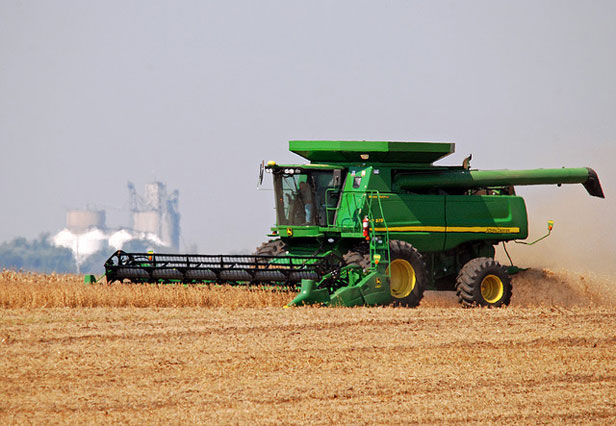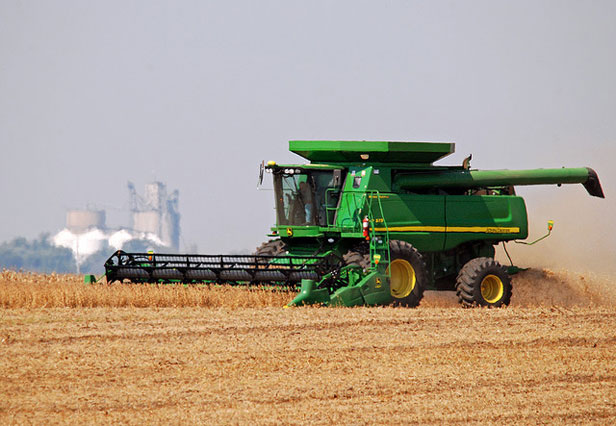 Combine nation: Soybean harvest near Lexington, Ill.Photo: tlindenbaum
Combine nation: Soybean harvest near Lexington, Ill.Photo: tlindenbaum
A busy summer has given way to a busy fall, and while I’d love to celebrate my farm’s successes and ponder what I should do differently next year, it’s not quite time yet. Though the days are getting shorter and the nights are downright chilly, we have yet to have a hard, killing frost.
The temperature has been dancing around the magic number 32 for weeks now, dropping dangerously close, only to have overnight lows pop back up into the 40s for another week. While my basil is looking worse for wear, the tomatoes are miraculously producing and the eggplants and peppers are still blooming. I even had a yellow summer squash resprout some leaves and put on one last fruit.
I’m truly grateful for the bounty. But when I’m honest with myself, the growing season lasted longer than my energy. It feels seditious, but I’m looking forward to something besides using my corn knife to take down weeds.
My garden and my motivation need a break, and a fresh start.
Except that as soon as I wish for a frost, I look at the list of things that must be done before the snow flies and take that wish right back. There just aren’t enough daylight hours. It makes me so thankful that Congress extended daylight savings time into November a few years back.
This time of year brings subtle reminders of the consequences of our agriculture system. My house is suddenly full of hundreds of ladybugs, because their homes in the soybean fields where they munched aphids all summer have been cut down — they’re looking for a warm place to spend the winter. If soybeans weren’t such a prominent monocrop, there wouldn’t be so many ladybugs.
The lay of the land changes during harvest in the Midwest. I’d forgotten how much the tall corn blocks the horizon until the combines roll through and I can see clear across the section again. Semi trucks loaded with grain rumble menacingly down bumpy gravel roads, and I don’t feel safe riding my bike.
All this really brings home the fact that no one grows anything but corn and soybeans around here. But it wasn’t so long ago that farmers also grew oats and barley, baled hay, and ran cows on pasture. A few still do, but corn and ‘beans are kings in Nebraska.
I wonder if anyone else is even thinking about frost.



